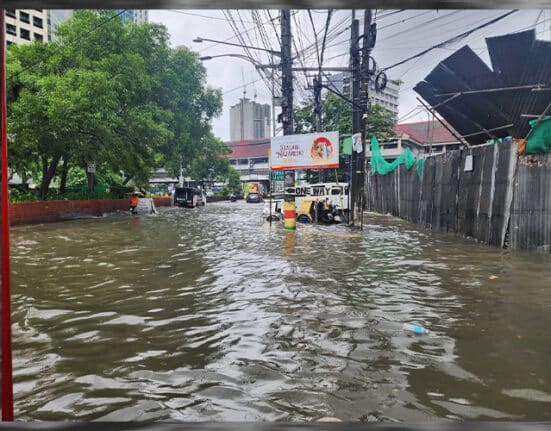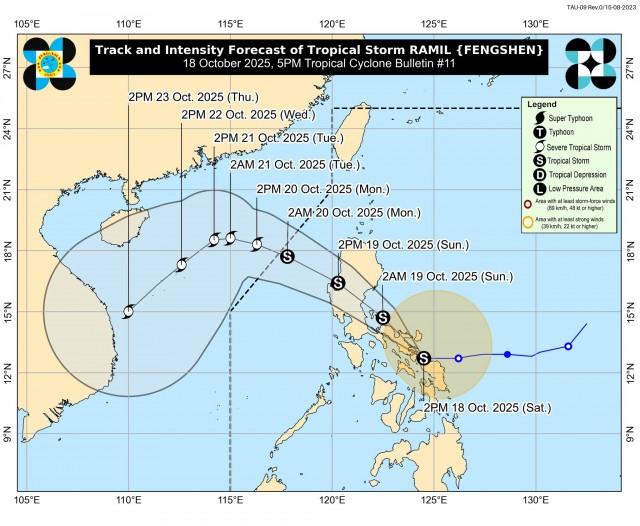AS LUZON and Visayas continue to bear the brunt of severe weather brought by the southwest monsoon intensified by Emong and Dante, more cities and provinces hard-hit by the conditions have declared a state of calamity.
With relentless rainfall and widespread flooding still impacting large areas of Luzon, the number of places under a state of calamity is steadily rising, reflecting the worsening weather situation.
The combined impact of Severe Tropical Storm Crising, Typhoon Emong, Tropical Storm Dante, and the southwest monsoon has forced thousands of families from their homes and caused significant infrastructure damage.
According to the latest report from the National Disaster Risk Reduction and Management Council (NDRRMC), 2.7 million individuals or 765,869 families across 65 provinces have been affected by the floods.
As of July 24, here is a list of local government units that have declared, or are planning to declare, a state of calamity:
National Capital Region
•Quezon City
•Manila City
•Malabon City
•Las Piñas City
•Marikina City
Region I (Ilocos Region)
•Pangasinan
- Dagupan City
- Malasiqui
- Calasiao
- Umingan
- Sta. Barbara
- Lingayen
- Mangaldan
- Mangatarem
Region III (Central Luzon)
•Bataan
•Bulacan
- Balagtas
- Calumpit
- Paombong
- Meycauayan
•Tarlac
- Paniqui
•Pampanga
- Minalin
Region IV-A (CALABARZON)
•Batangas
- Agoncillo
•Cavite
•Rizal
- Cainta
- San Mateo
- Rodriguez (Montalban)
Region IV-B (MIMAROPA)
•Palawan
- Roxas
Region VI (Western Visayas)
• Antique
- Sebaste
- Barbaza
Region VII (Central Visayas)
•Cebu City
Purpose of Declaration
Under the Philippine Disaster Risk Reduction and Management Act of 2010, a state of calamity refers to a situation where natural or man-made hazards cause widespread casualties, infrastructure damage, and significant disruptions to livelihoods, transportation, and daily life.
The president or local city councils—known as the local sanggunian—can declare a state of calamity, typically following recommendations from the NDRRMC or local disaster risk reduction and management offices.
The primary goal of such declarations, especially during emergencies involving large numbers of displaced people, is to enable local governments to tap into their quick response funds.
Areas under a state of calamity are also empowered to impose controls to prevent overpricing, hoarding, and profiteering of essential items such as food, fuel, and medicine.
Additionally, affected residents may be eligible for zero-interest loans through government-run lending institutions.
Weather Update
According to PAGASA, Emong has intensified into a typhoon, packing sustained winds of 120 kph and gusts reaching up to 150 kph. Meanwhile, Tropical Storm Dante is nearing its exit from the Philippine Area of Responsibility (PAR).
A tropical depression has also developed to the far east of the Visayas, but it is not expected to enter PAR. Nonetheless, heavy to torrential rains are forecast over parts of Luzon on Thursday.
Currently, Tropical Cyclone Wind Signal (TCWS) No. 3 is raised over the northern part of Pangasinan and the western area of La Union.
TCWS No. 2 is in effect for Ilocos Norte, Ilocos Sur, the rest of La Union, parts of Apayao (west), Abra, Kalinga, Mountain Province, Ifugao, Benguet, central Pangasinan, and the western side of Nueva Vizcaya.
Meanwhile, Signal No. 1 is up in Batanes, Cagayan including the Babuyan Islands, central and western Isabela, the remaining parts of Nueva Vizcaya, Quirino, the rest of Apayao, other areas in Pangasinan, central and northern Zambales, Tarlac, and much of western and central Nueva Ecija.
How useful was this post?
Click on a star to rate it!
Average rating 0 / 5. Vote count: 0
No votes so far! Be the first to rate this post.
We are sorry that this post was not useful for you!
Let us improve this post!
Tell us how we can improve this post?









